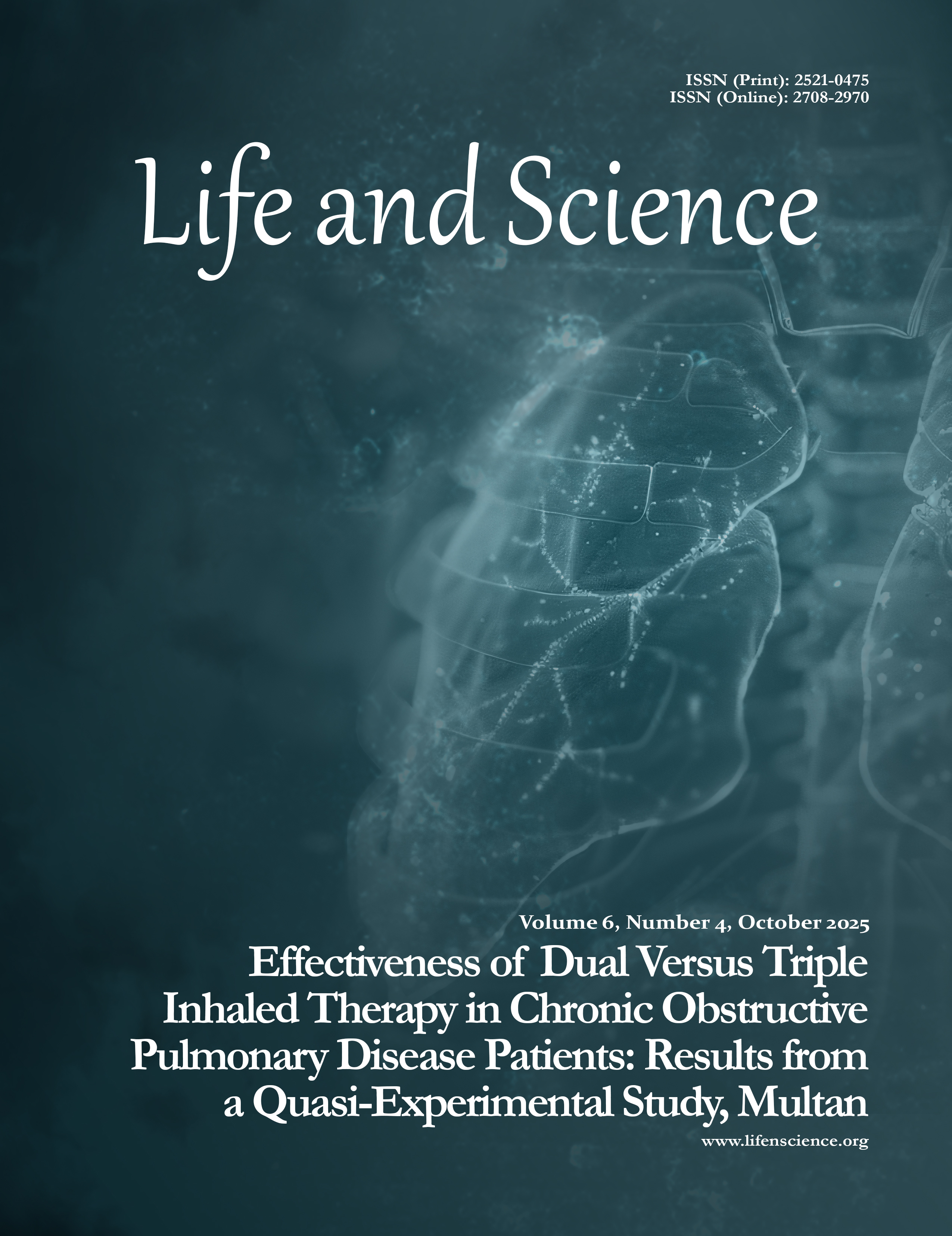Association of High Agatston Coronary Artery Calcium Score with Critical Coronary Artery Disease: A Cross-Sectional Study from Rawalpindi, Pakistan
Abstract
Objective: To determine the association and pattern of critical coronary artery disease in patients with high
calcium scores.
Study Design: Analytical cross-sectional study.
Place and Duration of Study: The study was conducted at the Department of Cardiology, Armed Forces Institute of Cardiology/National Institute of Heart Diseases (AFIC/NIHD), Rawalpindi, Pakistan from May 2025 to August 2025.
Methods: A total of 250 patients between the ages of 25 and 70 years, belonging to both genders, with the
diagnosis of coronary artery disease (CAD), having a coronary artery calcium score (CACS) of >400, were
included. Patients with a previous history of coronary artery bypass grafting, unstable angina, valvular heart
disease, previous myocardial infarction, and chronic kidney disease were excluded. All patients underwent
coronary angiography, and the frequency of patients with critical stenosis and the pattern of CAD was
ascertained. Data analysis was done using SPSS version 26, taking a P-value of less than 0.05 as significant.
Results: The mean age of patients was 57.4±9.2 years. Out of 250 patients, 161 (64.4%) had CACS of 400-1000,
while 89 patients (35.6%) had CACS above 1000. A total of 184 patients (73.6%) had significant CAD. CACS of
more than 1000 was significantly associated with a higher risk of critical CAD (P=0.004). Age >50 years (P=0.035)
and male gender (P=0.019) were found to be significantly associated with a higher CACS as well as the presence
of critical CAD.
Conclusion: A high and very high CACS was significantly associated with the presence of critical coronary artery
disease and multivessel involvement in this study. A higher score may help identify patients at risk and help in
risk stratification; however, further longitudinal studies are required to establish predictive and causal
relationships.
How to cite this: Farhan S, Khan MN, Sadiq MW, Hashmi MO, Shah SA. Association of High Agatston Coronary Artery Calcium Score with Critical Coronary Artery Disease: A Cross-Sectional Study from Rawalpindi, Pakistan. Life and Science. 2025; 6(4): 464-470. doi: http://doi.org/10.37185/LnS.1.1.1008
Copyright (c) 2025 Shaheer Farhan, Muhammad Nadir Khan, Muhammad Wajid Sadiq, Muhammad Omer Hashmi, Syed Akmal Shah

This work is licensed under a Creative Commons Attribution-NonCommercial 4.0 International License.

















